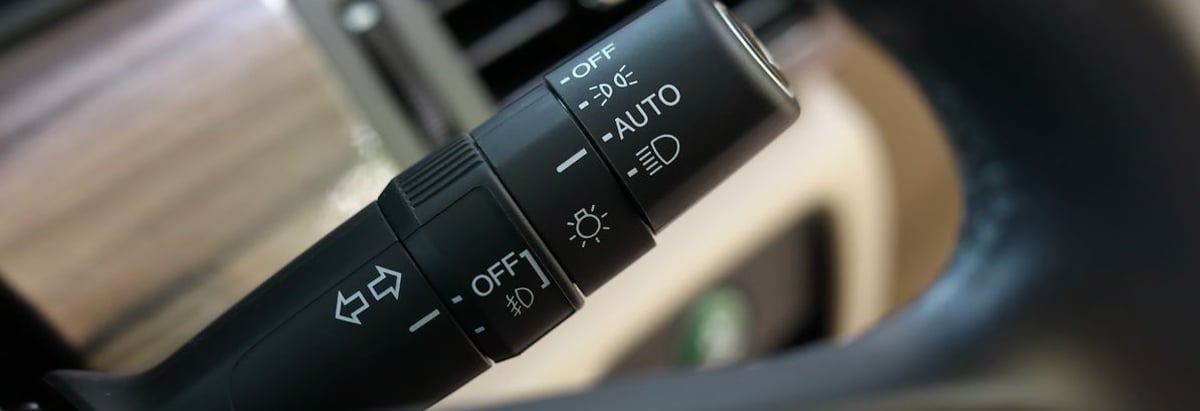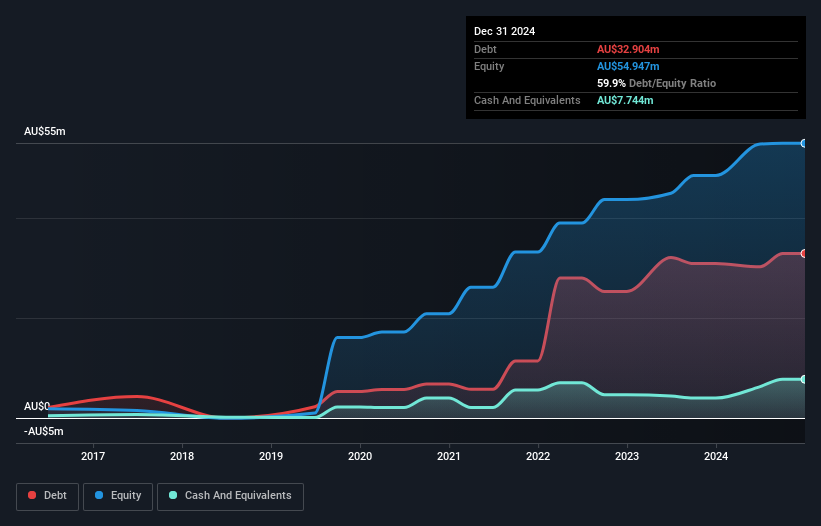
Howard Marks put it nicely when he said that, rather than worrying about share price volatility, 'The possibility of permanent loss is the risk I worry about... and every practical investor I know worries about.' It's only natural to consider a company's balance sheet when you examine how risky it is, since debt is often involved when a business collapses. We note that RPM Automotive Group Limited (ASX:RPM) does have debt on its balance sheet. But the more important question is: how much risk is that debt creating?
When Is Debt A Problem?
Debt and other liabilities become risky for a business when it cannot easily fulfill those obligations, either with free cash flow or by raising capital at an attractive price. If things get really bad, the lenders can take control of the business. However, a more usual (but still expensive) situation is where a company must dilute shareholders at a cheap share price simply to get debt under control. Of course, debt can be an important tool in businesses, particularly capital heavy businesses. When we think about a company's use of debt, we first look at cash and debt together.
How Much Debt Does RPM Automotive Group Carry?
The image below, which you can click on for greater detail, shows that at December 2024 RPM Automotive Group had debt of AU$32.9m, up from AU$30.9m in one year. However, because it has a cash reserve of AU$7.74m, its net debt is less, at about AU$25.2m.

A Look At RPM Automotive Group's Liabilities
Zooming in on the latest balance sheet data, we can see that RPM Automotive Group had liabilities of AU$34.5m due within 12 months and liabilities of AU$23.4m due beyond that. Offsetting these obligations, it had cash of AU$7.74m as well as receivables valued at AU$19.8m due within 12 months. So its liabilities outweigh the sum of its cash and (near-term) receivables by AU$30.4m.
This deficit casts a shadow over the AU$14.1m company, like a colossus towering over mere mortals. So we'd watch its balance sheet closely, without a doubt. After all, RPM Automotive Group would likely require a major re-capitalisation if it had to pay its creditors today.
View our latest analysis for RPM Automotive Group
We use two main ratios to inform us about debt levels relative to earnings. The first is net debt divided by earnings before interest, tax, depreciation, and amortization (EBITDA), while the second is how many times its earnings before interest and tax (EBIT) covers its interest expense (or its interest cover, for short). The advantage of this approach is that we take into account both the absolute quantum of debt (with net debt to EBITDA) and the actual interest expenses associated with that debt (with its interest cover ratio).
RPM Automotive Group has a debt to EBITDA ratio of 2.9 and its EBIT covered its interest expense 3.4 times. Taken together this implies that, while we wouldn't want to see debt levels rise, we think it can handle its current leverage. However, one redeeming factor is that RPM Automotive Group grew its EBIT at 19% over the last 12 months, boosting its ability to handle its debt. The balance sheet is clearly the area to focus on when you are analysing debt. But you can't view debt in total isolation; since RPM Automotive Group will need earnings to service that debt. So when considering debt, it's definitely worth looking at the earnings trend. Click here for an interactive snapshot.
But our final consideration is also important, because a company cannot pay debt with paper profits; it needs cold hard cash. So we always check how much of that EBIT is translated into free cash flow. In the last three years, RPM Automotive Group created free cash flow amounting to 19% of its EBIT, an uninspiring performance. That limp level of cash conversion undermines its ability to manage and pay down debt.
Our View
We'd go so far as to say RPM Automotive Group's level of total liabilities was disappointing. But on the bright side, its EBIT growth rate is a good sign, and makes us more optimistic. We're quite clear that we consider RPM Automotive Group to be really rather risky, as a result of its balance sheet health. For this reason we're pretty cautious about the stock, and we think shareholders should keep a close eye on its liquidity. The balance sheet is clearly the area to focus on when you are analysing debt. However, not all investment risk resides within the balance sheet - far from it. To that end, you should be aware of the 2 warning signs we've spotted with RPM Automotive Group .
If you're interested in investing in businesses that can grow profits without the burden of debt, then check out this free list of growing businesses that have net cash on the balance sheet.
New: AI Stock Screener & Alerts
Our new AI Stock Screener scans the market every day to uncover opportunities.
• Dividend Powerhouses (3%+ Yield)
• Undervalued Small Caps with Insider Buying
• High growth Tech and AI Companies
Or build your own from over 50 metrics.
Have feedback on this article? Concerned about the content? Get in touch with us directly. Alternatively, email editorial-team (at) simplywallst.com.
This article by Simply Wall St is general in nature. We provide commentary based on historical data and analyst forecasts only using an unbiased methodology and our articles are not intended to be financial advice. It does not constitute a recommendation to buy or sell any stock, and does not take account of your objectives, or your financial situation. We aim to bring you long-term focused analysis driven by fundamental data. Note that our analysis may not factor in the latest price-sensitive company announcements or qualitative material. Simply Wall St has no position in any stocks mentioned.
About ASX:RPM
RPM Automotive Group
Engages in the manufacture, wholesale distribution, and retail of tyres, auto parts, and accessories for motorsport, passenger, and commercial vehicles in Australia.
Good value with proven track record.
Market Insights
Community Narratives


